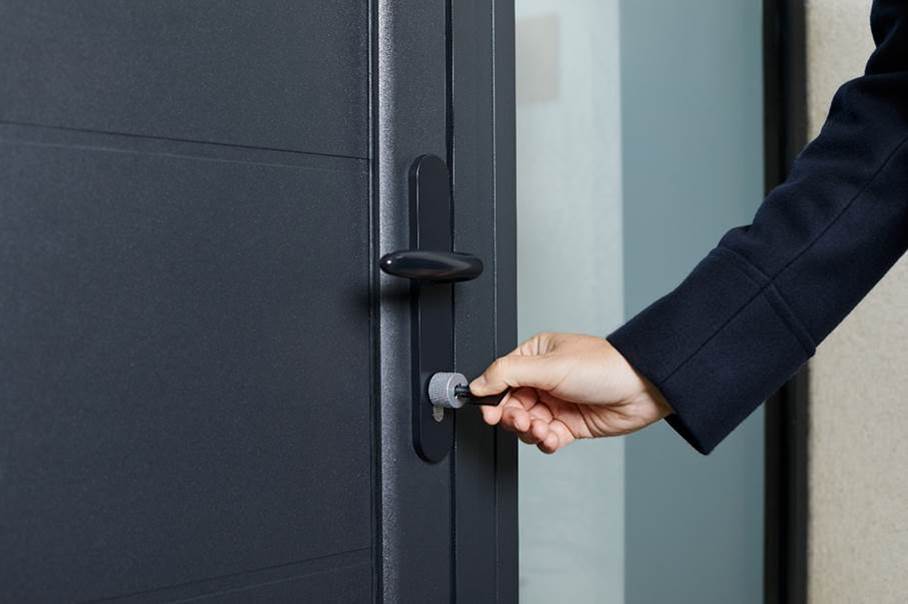When it comes to securing your home, one of the most critical elements is the lock on your door. Understanding the Comparing ANSI lock grades can significantly influence your choice of locks, ensuring you pick the most secure option for your needs. The ANSI (American National Standards Institute) sets the standards for lock quality, which are crucial for homeowners and renters looking to enhance their home security.
In this guide, we will delve into the intricacies of ANSI lock grades, helping you make informed decisions to keep your home safe and secure.

What Are ANSI Lock Grades?
The ANSI lock grades are a rating system developed by the American National Standards Institute to classify the quality and security level of locks. These grades help consumers understand the durability and security features of various locks, ensuring they choose the best option for their specific needs. The grades range from Grade 1 to Grade 3, with Grade 1 being the highest level of security.
Grade 1: Maximum Security
Grade 1 locks offer the highest level of security and are typically used in commercial settings. However, they are also an excellent choice for homeowners who want top-notch protection. These locks are designed to withstand a high level of force and provide superior protection against break-ins. For detailed information about high-security locks suitable for various settings, you can visit this link.
Grade 2: High Residential Security
Grade 2 locks are commonly used in residential settings, offering a balance between security and cost. They provide a good level of protection for homes and are suitable for most residential applications. These locks are more robust than Grade 3 locks and can withstand moderate force.
Grade 3: Basic Residential Security
Grade 3 locks are the minimum standard for residential security. They are best suited for internal doors or areas where security is not a major concern. While they are the most affordable, they offer the least protection and are not recommended for main entry doors.
Why ANSI Lock Grades Matter
Understanding the ANSI lock grades is crucial for anyone looking to secure their home effectively. These grades provide a standardized way to assess the quality and security of locks, allowing consumers to make informed decisions. By choosing the right grade, homeowners can ensure their locks meet their specific security needs.
Durability and Testing
Each ANSI lock grade undergoes rigorous testing to ensure it meets specific standards of durability and security. These tests include assessing the lock’s ability to withstand force, its resistance to drilling and picking, and its longevity under regular use. For more insights into how these locks are tested, you can check out this external resource.
Choosing the Right Lock for Your Home
Selecting the appropriate ANSI lock grade for your home depends on various factors, including your security needs, budget, and the specific application of the lock. Here are some tips to help you choose the right lock:
Assess Your Security Needs
Consider the level of security required for each door in your home. For main entrance doors, a Grade 1 or Grade 2 lock is recommended to ensure maximum protection. For internal doors or areas with lower security needs, a Grade 3 lock may suffice.
Consider Your Budget
While higher-grade locks offer better security, they can also be more expensive. Assess your budget and weigh the cost against the level of security you need. Investing in a high-quality lock can provide peace of mind and protect your home from potential break-ins.
Evaluate Lock Features
Look for additional features that can enhance the security of your locks, such as deadbolts, key control systems, and alarm integration. For more information on advanced lock features, visit this page.
Installation and Maintenance
Proper installation and maintenance are essential for ensuring the effectiveness of your locks. Here are some considerations for maintaining your locks:
Professional Installation
For optimal security, it’s advisable to have your locks installed by a professional locksmith. This ensures the locks are fitted correctly and function as intended. You can learn more about professional installation services by visiting this link.
Regular Maintenance
Regularly inspect and maintain your locks to ensure they continue to function correctly. This includes lubricating moving parts, checking for wear and tear, and addressing any issues promptly. Proper maintenance can extend the lifespan of your locks and maintain their security features.
Upgrade When Necessary
If your locks are outdated or no longer meet your security needs, consider upgrading to a higher-grade lock. Advances in lock technology provide more robust security options, which can significantly enhance your home’s protection.

FAQs
What is the difference between ANSI Grade 1 and Grade 2 locks?
Grade 1 locks offer the highest level of security and are designed for commercial use, while Grade 2 locks are suitable for high residential security, providing a balance between cost and protection.
Can I install a Grade 3 lock on my front door?
While you can install a Grade 3 lock on your front door, it is not recommended due to its lower security level. For better protection, consider using a Grade 1 or Grade 2 lock.
How do I know if my lock meets ANSI standards?
Check with the manufacturer or a professional locksmith to ensure your lock is certified to meet ANSI standards. Certified locks will often have markings indicating their grade level.
For additional information on high-security lock options, you can explore this resource.
This article contains affiliate links. We may earn a commission at no extra cost to you.






